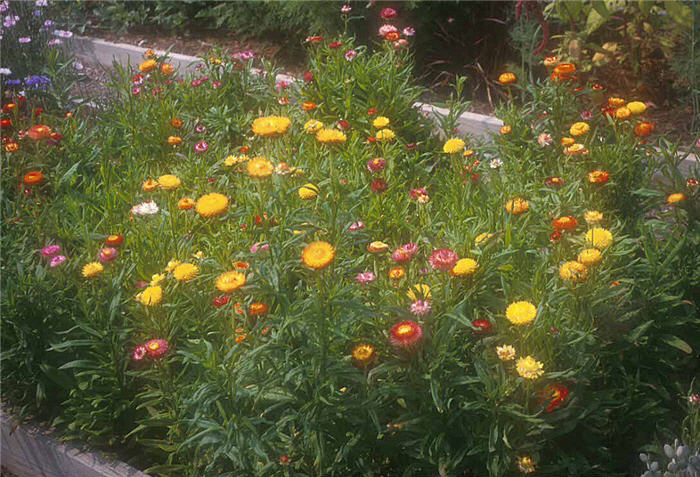| Botanical Name: Helichrysum; Helipterum | |
| Common Name: Strawflower |

-
Anatomy
-
Culture
-
Design
Plant Type
Annual
Height Range
1-3'
Flower Color
Orange, Pink, Red, Yellow, White, Multi-Colored
Flower Season
Summer
Leaf Color
Green
Bark Color
n/a
Fruit Color
n/a
Fruit Season
n/a
Sun
Full
Water
Low, Medium
Growth Rate
Fast
Soil Type
Sandy, Clay, Loam, Rocky
Soil Condition
Average, Poor, Well-drained, Dry
Soil pH
Neutral, Basic
Adverse Factors
n/a
Design Styles
English Cottage
Accenting Features
Showy Flowers
Seasonal Interest
Summer
Location Uses
Perennial Border, Raised Planter
Special Uses
Container, Cut Flowers
Attracts Wildlife
n/a
Information by: Stephanie Duer
Photographer:
Photographer:
-
Description
-
Notes
These may be the quintessential dried flower used for crafting, wreaths, and decorating. Technically, the flowers are little, pale things in the center of the "flower;" the colorful petals are actually bracts that are stiff and provide the dependable persistence so valued when cut and dried. Color range is large, with yellows, pinks, reds, and orange in bright or pastel hues. Size also varies, from 12 to about 36 inches tall.
Strawflowers thrive in hot, sunny sites with moderate to low water. Set out plants after frost or sow seeds when it starts to warm up (mid to late May). To dry, pick flowers that are fully open, and hang upside down in a shady spot.